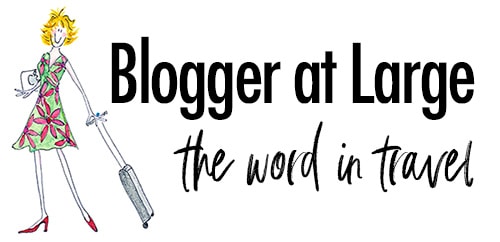Cuba is an amazing country to visit, but here are some things you need to know before you go.
Firstly you’ll need a clear pre-Covid PCR test. But when general travel resumes, Cuba is a wonderful and fascinating country to visit. I’ve been twice now.
For Americans it’s still a difficult country to visit, but for most other nationalities, including we Kiwis, we can fly there via Mexico, Canada or other Caribbean countries.
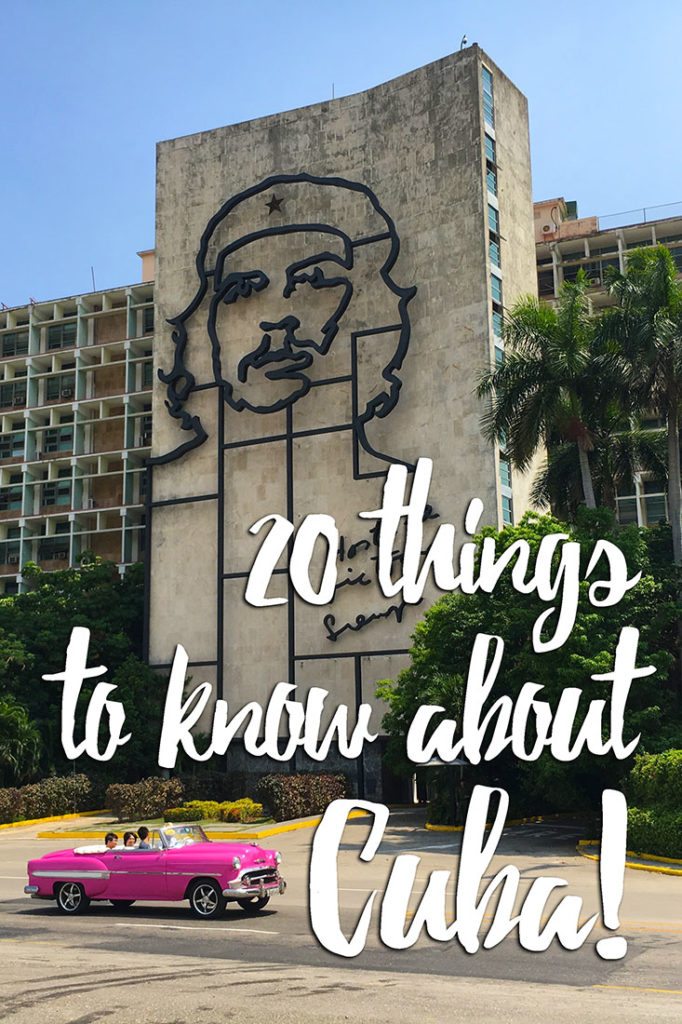
This post covers some important things you need to know before you go to Cuba, whether it’s for just a weekend in Havana or a whole 2 week itinerary in Cuba.
But first, where is Cuba?
Cuba is actually quite a large country for an island nation. It’s about the size of the whole state of Florida. It is located just south of Miami and over the top of the Cayman Islands (where my brother lives) and Jamaica and often acts as a bit of an umbrella from the storms that roar up the eastern seaboard.

So here we go with things to know about Cuba!
1. How do I get a visa for Cuba?
In New Zealand you can get a visa (travel card) through the Cuban Consulate in Wellington. There is a typo on their website and the phone number was also not working so eventually I got hold of the ambassador and ended up flying to Wellington for the day to get them arranged.
You don’t need to do that. You can either photo copy your passport photo page and stamped pages, have them notiarised by a JP and send the copies down with your application form, photo and $80. If you visit in person you pay $30. Your travel agent can also handle this for you if you are using one.
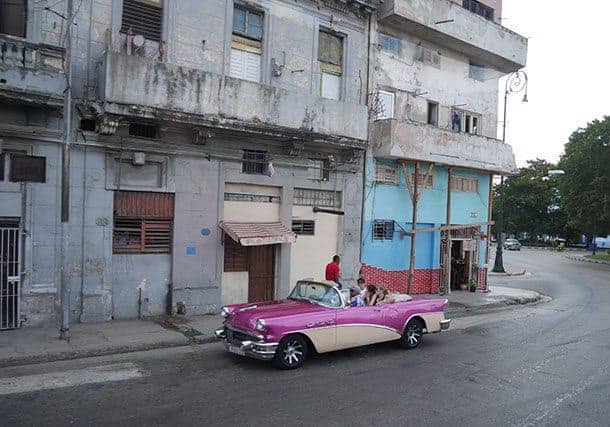
In the US, I joined the Fathom cruise ship (this cruise line is no longer running sadly, but the embarkation in Miami is the same for other cruise lines).
A US$75 fee was added to the cruise price for travel cards to be issued to the Americans very simply at check in. I’m told they can do that for other nationalities too, so double check, as it’s certainly easier!
2. What currency do they use in Cuba?
They have two currencies in Cuba and you cannot buy these outside of the country.
The Cuban CUC (pronounced kook) is for visitors. One CUC is worth about US$1. They also use the CUP (pronounced coop) which is worth about .04cents and which is what the locals use to by their rations and groceries.
You should change your currency at the port or airport lest you get duped and end up with a fist full of worthless CUPs. How can you tell the difference between the two Cuban currencies? The CUC has a monument on each note, the CUP has a person on each note.
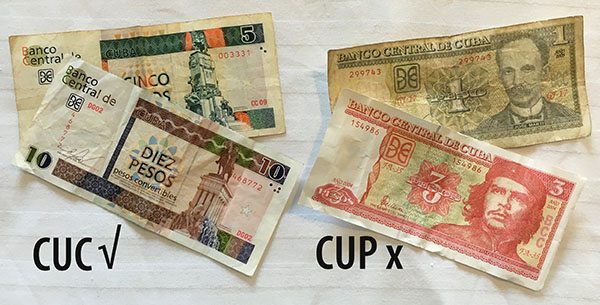
3. Can I take US dollars to Cuba?
They do exchange US dollars. I wasn’t aware of this and took Euros, which they also exchange. You can also tip in US dollars, but cannot buy anything in dollars (although we did see one vendor accepting them).
But, as above, change them at the airport or port as doing it anywhere else risks being ripped off. Of course, if you know the exchange rate and you know you want CUCs you won’t get ripped off, and in fact can even get a better rate as these operators are not state employees.

4. Can I use my credit card in Cuba?
No. Cash is king in Cuba. If you plan to buy high ticket items like a box of cigars, expect to pay about $5-$30 per stick. My husband bought a box of 10 Romeo & Juliettas for CUC65. Also remember your duty-free allowances (see below)!

5. Is there cell phone coverage in Cuba?
Yes. My Vodafone is picking up Cuba Cell. I am sending texts which are being received, but I cannot receive return texts without using the ship’s WiFi. However I can send and receive phone calls – at some extortionate rate no doubt!
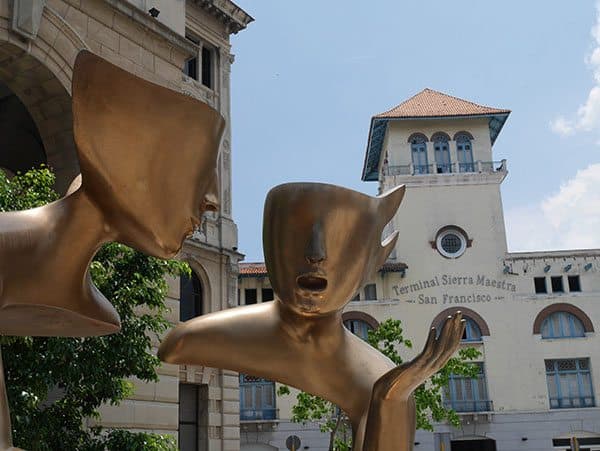
6. Is there WiFi in Cuba?
No, not really. There is a “new” Hot Spot in Old Havana, you’ll know it by the scores of people sitting around the building all staring at their phone screens. There is a fee to sign up, but I didn’t get that far – and I’m assuming since I can’t use my credit card, that it wouldn’t work. On board our ship I can sign up for WiFi and pay about US$35 for 100 minutes.

7. Do they have tipping in Cuba?
Good question! Yes they do expect tipping in Cuba.
Here is an idea of how much to tip in Cuba for various services. Bearing in mind the CUC and US dollar are about one for one:
1/2 – 1 CUC for the bathroom attendant handing out toilet paper (another tip is to take your own for the day as some bathrooms don’t have this luxury and there is no paper!)
1 CUC for street performers/buskers
2 – 4 CUCs for waiters


2 – 3 CUCs for a local guide in say the (fascinating) cemetery
3 CUCs per day for your bus driver if you’re taking a tour
6 – 8 CUCs for your guide if you’re with him/her for a whole day
I learned that guides, and others who make tips in Cuba, are taxed about 10% higher than their base earnings of C40 per month, as they are assumed to be making tips. Don’t forget to tip them, they rely on it!

I also have a great post covering all your tipping questions from around the world. Click on my Ultimate Guide to Tipping for more etiquette!
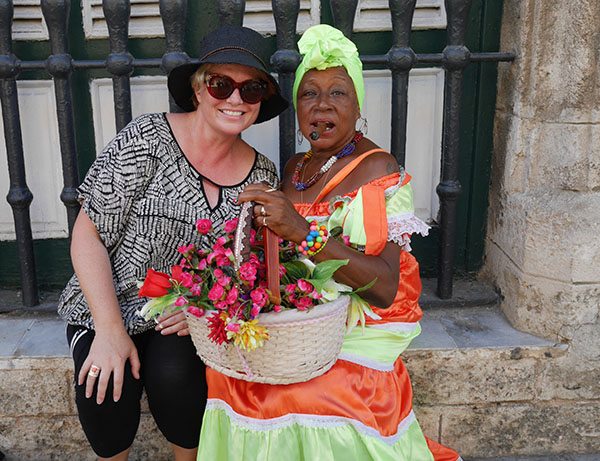
8. What should I do in Havana?
Walk! Take comfortable shoes and get lost in the side streets that pop out into plazas.

Visit the bars for a mojito or a daiquiri and listen to the live music.
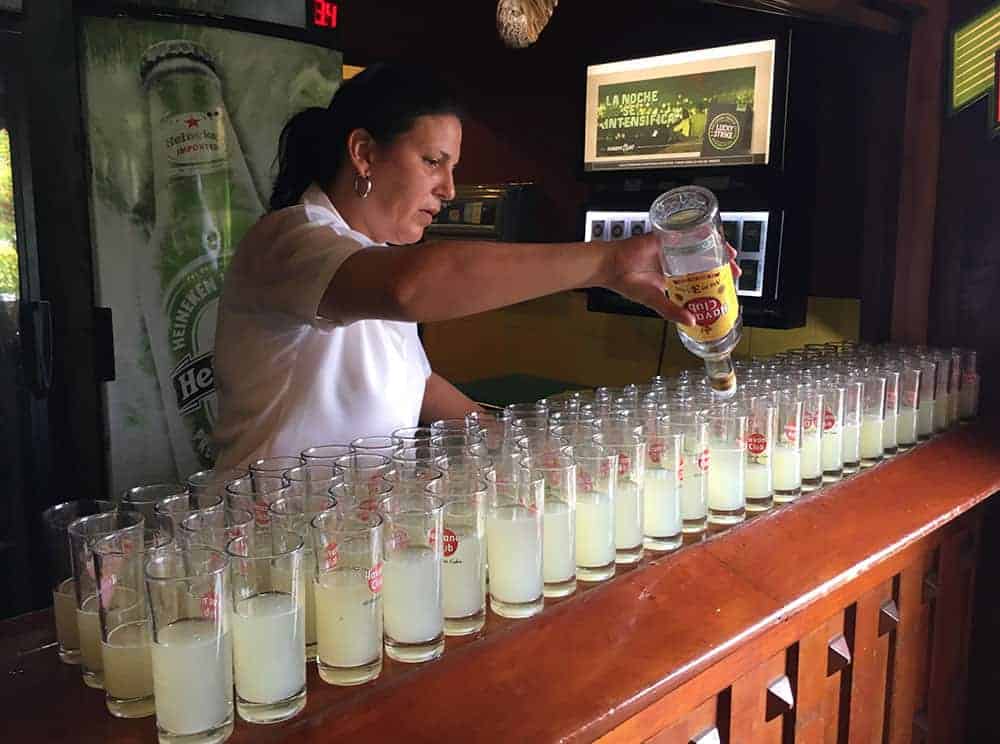
Take photos (I averaged 300 per day!).
Talk to the locals.
Ride in a classic car and tell the driver to take you to Revolution Square with the enormous profiles of Che Guevara and Camilo Cienfuegos, revolutionaries with Fidel Castro.
Here’s my post on our day in Havana >>

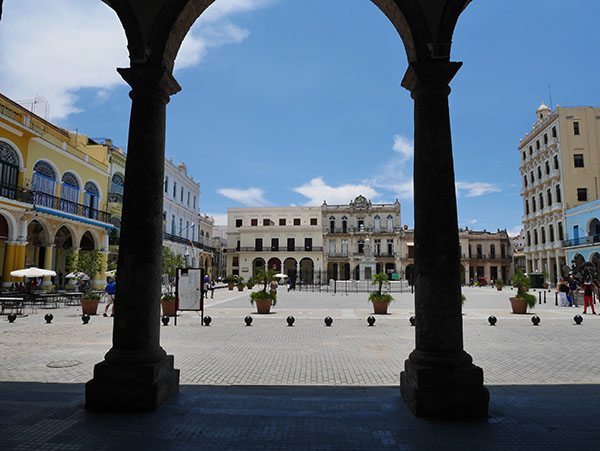
9. How much should I pay for a ride in a classic car in Havana?
20 CUCs for half an hour, you might get it for C30 for a whole hour, but C40 is about right for an hour.
Oh and these gorgeous old mobiles are about $35,000 to buy and I’m delighted to learn that they are protected by the government and are not allowed to be sold and exported – so don’t worry that Havana is going to become all modern after the full embargo is lifted!


On saying that there are plenty of other makes and models here too. Lots of Russian cars, some French and even a few Japanese. Or take a ride on a horse and cart or one of these dinky Coco Taxis.
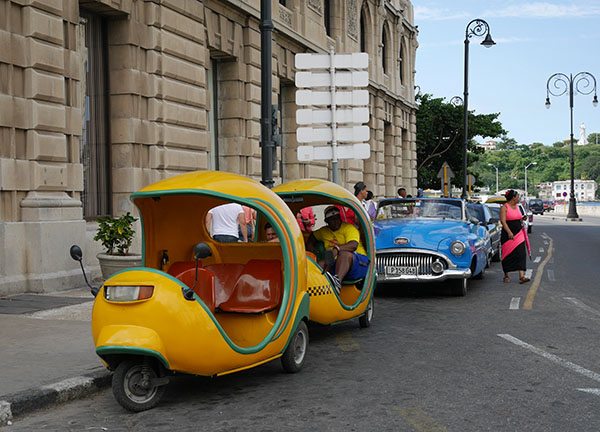
10. What to buy in Cuba?
Shopping in Cuba is pretty non existent except for souvenirs. We did see a Benetton store in one of the squares, but with every Cuban only earning 40 CUCs per month, I prefer to buy local art and crafts so they can keep a little more cash. But you’re here for the cigars and art, right?
11. Where can I buy art in Havana?
If you’re like me and collect original art from your travels, you’ll love the art in Havana.
It’s not expensive (from 10 to 180 CUCs) and it’s everywhere in Old Havana, but the Art Market that used to be outdoors, is now in a huge warehouse down at the port and is a must visit.
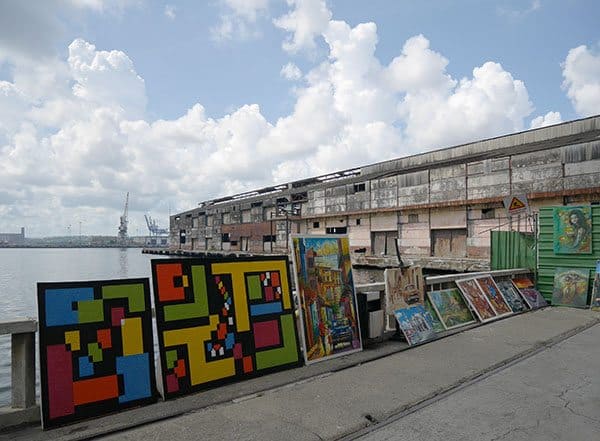
Is it almost overwhelming with the amount and variety of paintings and other souvenirs available. We allowed an hour and had to race at the end to make our final selection. With more time I would have bought another painting!
I also bought some cute teracotta Cuban figurines that you can put an incense stick into the back of their skirt and the smoke comes out of their mouths!
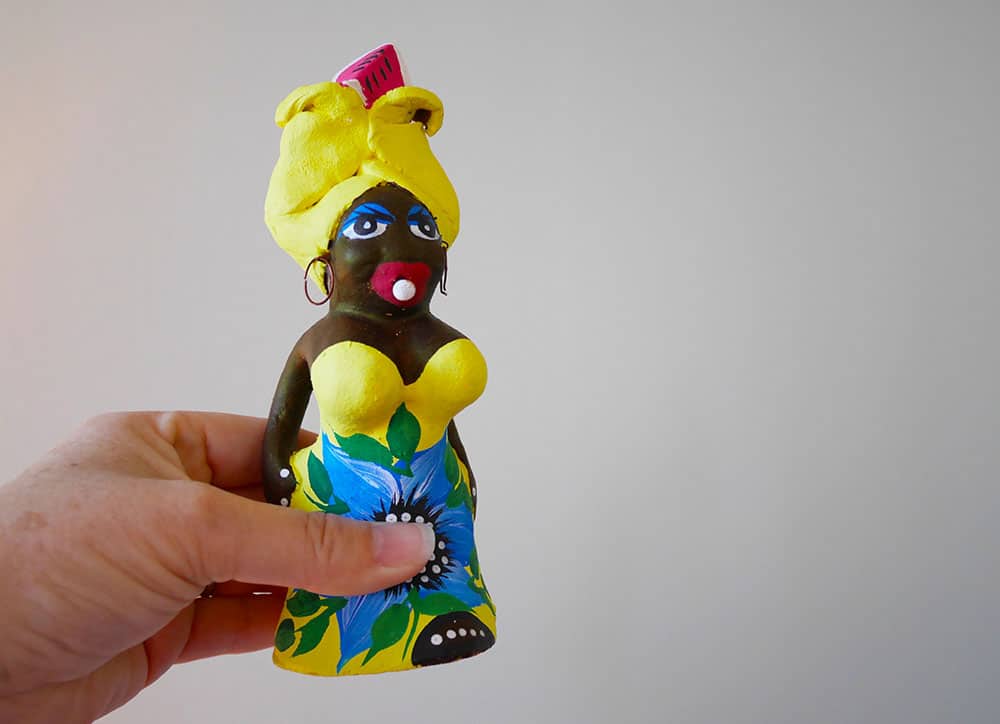
12. Where can I buy cigars in Havana?
You should avoid the guys touting cigars on the street unless you want to take hand out rolled banana leaves to your mates back home!
Buy your Cuban cigars from certified cigar shops. There is one next to Floriditas which is guarded by cops so you know you’re safe there. We also bought from the cigar shop at the port. Remember your allowances though (see next point).
You can also buy cigars in the local bars and the waiters will help you choose, cut it and light it for you.

13. How many cigars am I allowed to bring back?
$100 worth of tobacco into the US. Three individual cigars into Australia per person. 50g of tobacco (excluding cigarettes) into New Zealand.
I just weighed the cigars we brought home and it averages out to five individual cigars per person. The duty in New Zealand is about $5 per cigar. But hey, you have real Cubans!
14. What language do they speak in Cuba?
Spanish with pretty good English everywhere. It would be good to have a few Spanish phrases ready to roll out though, like hola and gracias!
15. Can I take organised tours in Cuba?
Yes and I would totally recommend you do. Havanatur is the company Fathom uses and our guide Noema was really lovely with excellent English.
On day one in Havana we did a walking tour which included lunch of a huge lobster tail each and saw four squares (piazzas), learning some history and stopping for free time to shop and take photos along the way.
Day two we visited Revolution Square, the Fine Arts Museum (opposite is the Museum of the Revolution, which we didn’t have time for but I would recommend you make time!), the Art Market at the port and also the El Tanque community project.

16. What gifts shall I take to give to the Cuban people?
On the Fathom cruise ship, which is all about educational exchanges and cultural sustainability, they asked us not to take gifts to give directly as they don’t want to set a precedent for the locals (or certain locals) that when a ship comes in, they can expect gifts.
However, if you’re travelling independently, they LOVE things like moisturisers, toothpaste, make up and shampoos. Simple things like this cost so much. You’ll be approached by people on the street and asked if you have these items. If I went back I’d definitely hit Sephora, or just raid my hotel amenities en route, and take goodies for my guides who are absolutely delightful.
17 Can I visit a community project?
Absolutely! I visited El Tanque, a former abandoned water tank now an arts centre for children aged 7 to 18. It started in a poor neighbourhood with one man, Jose Fuster, beautifying the streets with mosaics. Over 15 years it has grown into a full time after school program for 250 kids of all levels, including some with disabilities. They come here to learn music, dance, they paint beautiful pictures and make jewellery, which is all for sale to reinvest back into the project. If you want to bring gifts, crayons and pencils are happily received.
18. Is Air BnB in Cuba?
Sure is! I met a couple at the bar at El Floriditas who had come from Los Angeles via Mexico and were staying with a woman who spoke no English. She provided them with an air conditioned room and they did all their arrangements through her son who speaks English. They were paying about $50 per night and said they’d recommend it.

19. What’s the night life like in Cuba?
Full of music and dancing! Think Buena Vista Social Club, salsa and flamenco. You can go to a show or just catch the scene in some of the bars in Old Havana.
20. What power outlets do they use in Cuba?
They use the American style two vertical pins (without the round prong). My advice is to pack one adapter and bring a multi board, that way you can charge everything in one go!
Booking.com